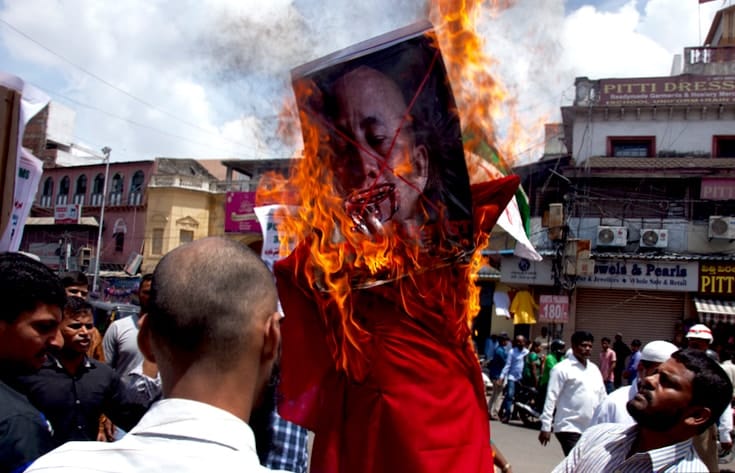What’s the connection between Buddhism and ethnic cleansing in Myanmar?BY RANDY ROSENTHAL| NOVEMBER 13, 2018
How have Buddhists become implicated in one of the worst humanitarian crises in the world? Randy Rosenthal looks through history to understand how a religion of peace has become a justification for violence.
Muslim protesters burn an effigy of radical Buddhist monk Ashin Wirathu in Hyderabad, India, September 10, 2017. AP Photo/Mahesh Kumar A.
“It is not power that corrupts but fear. Fear of losing power corrupts those who wield it and fear of the scourge of power corrupts those who are subject to it.”
– Aung San Suu Kyi
Understanding the Crisis in Myanmar
The scriptures of Judaism, Hinduism, and Islam condone, justify, and even sometimes encourage the use of violence. In Buddhist texts, it’s just the opposite. Chapter ten of the Dhammapada, an anthology of verses attributed to the Buddha, reads: “All tremble before violence. All fear death. Having done the same yourself, you should neither harm nor kill.” Another verse reads: “In this world hostilities are never appeased by hostility. But by the absence of hostility are they appeased. This is an interminable truth.” A line from the Metta Sutta reads: “Toward the whole world one should develop loving-kindness, a state of mind without boundaries—above, below, and across—unconfined, without enmity, without adversaries.” This principle of non-violence, consistent throughout the Pali Canon — the collection of early Buddhist teachings — is partly why many Buddhists are deeply troubled by the current situation in Myanmar — a majority-Buddhist country — where, particularly in Rakhine State, massive human rights violations are systematically being committed against the Muslim Rohingya people.
Linkback:
https://tubagbohol.mikeligalig.com/index.php?topic=90677.0